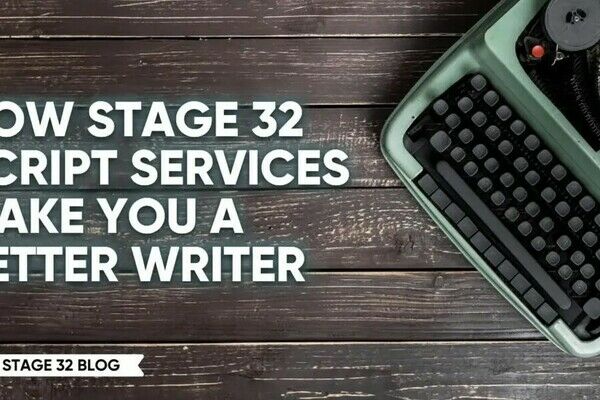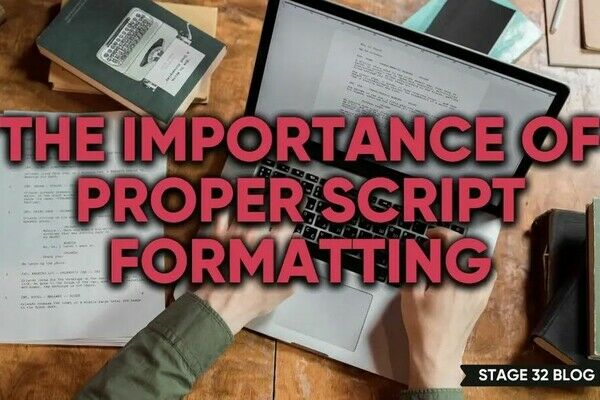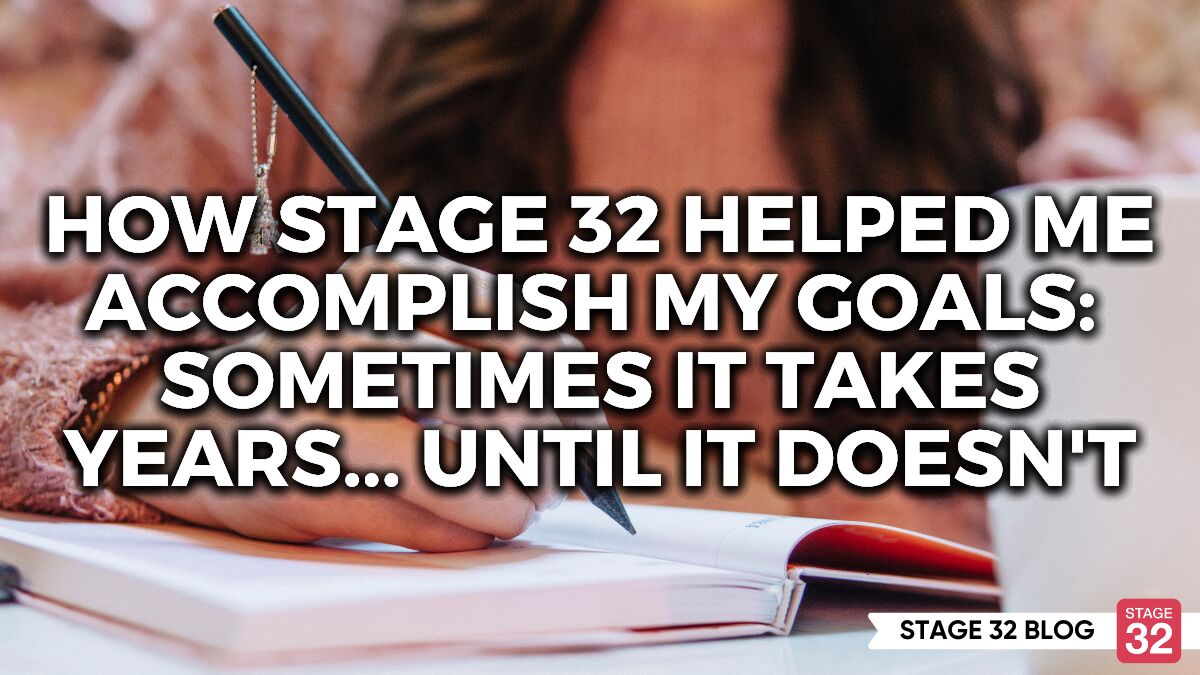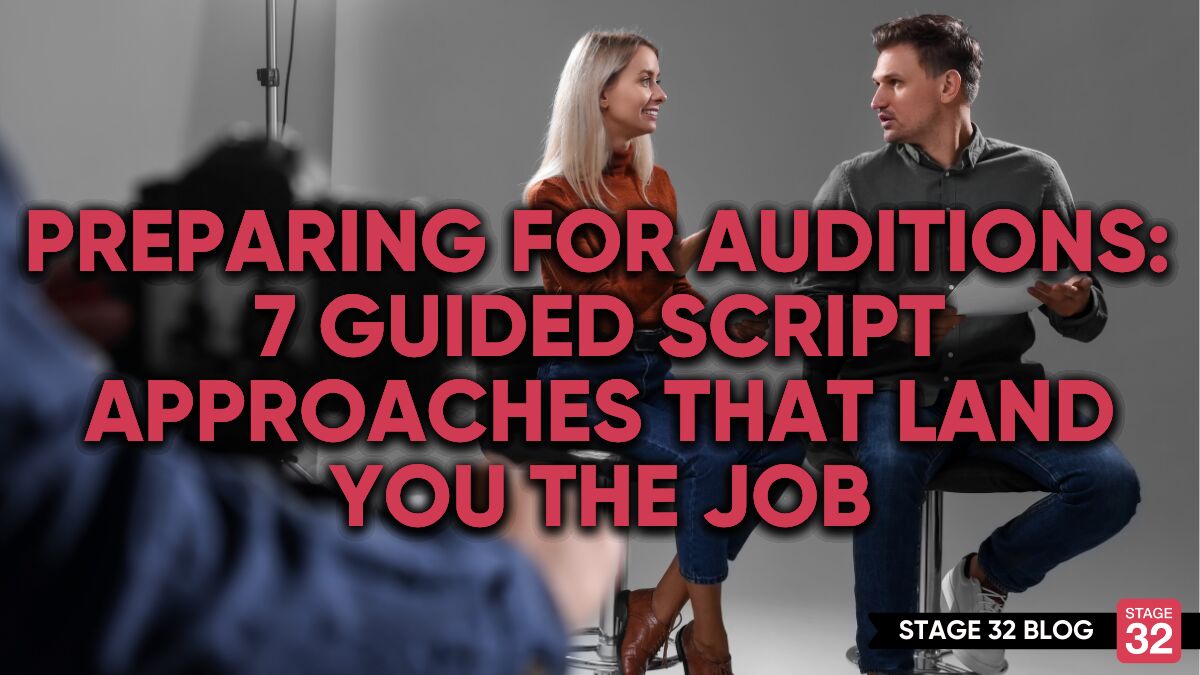Preparing for Auditions: 7 Guided Script Approaches That Land You The Job
There is nothing like auditioning. The range of emotions an actor feels stepping into a room full of decision-makers is considerable and often damaging to the quality of the audition itself.
One way to keep those emotions and the mistakes they cause in check is to know how to work on a script in a hurry. And I will let you in on a secret:
Good readers make better auditioners, whether you get the sides a week, a day, or ten minutes before the audition.
So, if you don’t read aloud, it’s time to start. Record yourself. Listen to your vocal quality, your rhythm, and pace, and for some of the other things I mention in this article.
The fact is, in the very visual medium of on-screen storytelling, actors don’t always take the time or get the guidance they need to make the most out of the text.
If you don’t put in the time, you are missing out, no matter how strong your look or your resume.
I’ll say it again—auditioning is hard. Even for veteran actors. It means being able to adapt to different spaces, the varied moods of those you audition for, any readers you might be auditioning with—from other actors to production assistants—and keeping the stakes of the audition far back in your mind so you can be in the moment.
As I was writing this article, I auditioned for someone with no experience in the arts, but lots of connections and funding that could help with a project I am relaunching in a much different area of the country from where it was created.
The audition entailed going into a network contact’s kitchen dressed tip to toe like a pirate and giving a very energetic, committed performance to a person I had never met—including singing a song, playing three different characters in 10 minutes, and somehow making this person feel comfortable in very uncomfortable circumstances.
Every audition is some form of this scenario. The seven approaches that follow will help you make the most of your own opportunities to land an acting gig.
1) Marking Up the Script
 Photo from my book Better Writing through Classroom Drama (rights belong to Joey Madia)
Photo from my book Better Writing through Classroom Drama (rights belong to Joey Madia)
The key to a good audition is decoding all that the writer has put into the words in the script. Use a system that works well for you; I use slashes for pauses (one for a small pause or place to take a breath; two for a character-driven pause) and underlining for emphasis (more underlines for more emphasis). I will put tricky pronunciations in the margin, spelled phonetically.
I also mark the beats of the scene, using numbers in circles. Next to each number, I place an active verb: “to convince,” “to defend,” “to bargain.” Figure out any changes the character goes through and be sure to know what the character WANTS.
The “trick” to marking up the script for auditions is to think like a writer and director.
2) Starting at the End of the Characters Arc
Casting from the end of the arc is one of the best things a director can do.
Typically, sides are taken from the first act of the script, or somewhere in the first half of the second. The character is either just entering or in the midst of dealing with the obstacles that are going to change their arc.
What’s on the other side is where you need to get to. Those are the character traits you need to have. Those are the traits the director has to see, whether they are aware of it or not.
If you don’t know the whole story, guess. Most are either “boy meets girl” or “stranger in a strange land.” In both it is Adapt or Die. In order to get the girl, the man’s-man has to find his softer, more open side. In order to defeat the villain, the hero has to get tougher, physically as well as mentally. Knowing this, you can gauge the changes. And then implant hints of them in your read, even if the sides are from early on.
How you show the decision-makers where the character starts and where they are going/will end up is what the rest of this article is about.
3) Vocal Quality, Rhythm, and Pace
Vocal quality is an underrated aspect of being an actor. But if the body is an instrument the sound that comes out is just as important as how the instrument looks and moves. Some of my favorite actors—Tom Hanks and Helen Mirren come to mind—have great voices. They are dynamic, full of emotion, and able to convey the subtle as well as the grandiose.
Rhythm and pace are also important. Richard E. Grant—who is no slouch in the vocal quality department—is a master of rhythm and pace. Kevin Costner is also a good example, as are Cate Blanchett, Alan Rickman, and Frances McDormand.

Care of the voice before an audition is important. Don’t do karaoke the night before. In cool weather, wear a scarf. And record yourself and listen for the things I’ve mentioned. Voiceover is a growing field all actors should be exploring and this is a great exercise for that.
As far as rhythm and pace, marking up the script/decoding the writer’s implanted intent are essential first steps. Knowing where the character goes will give you clues about this person. If they are weak and shy at the start, they may talk softly, haltingly, struggling for the right words so as not to offend. But if their arc takes them to a place of strength, their rhythm and pace is going to change.
Knowing the history of the character is important. Geography, class, and education all define a character’s vocal rhythm and pace.
4) "The Pause is Not Nothing."
Many actors are taught to “get on with it”—to speak the words as clearly and as quickly as possible. But “a pause is not nothing”—an invaluable piece of wisdom from one of the most influential of all acting coaches, Sanford Meisner.
It is in the pauses that the meaning of the moment is revealed. Pauses signal a change in Want, as the character struggles toward a new path to victory. Pauses can also be used to recover from a shock—the revealing of a secret or unexpected information.
James Lipton did an interview with Tom Hanks on Inside the Actor’s Studio where he praised the Academy Award–winner’s ability to making the act of thinking (another use of the pause) so interesting to watch. This is no easy feat.

Mark your pauses on the page when you are marking up your script. Make them strategic. Make them powerful.
Working with silence is a must. Considering the success of John Krasinski’s A Quiet Place, you may be called on to do a film or television series with a great deal of it.
5) Physicality
Earlier I compared the body to an instrument. It really is. You’ve hopefully taken movement, dance, or martial arts classes to keep that instrument tuned.
All those hours of sweat and effort pay off in the audition. Body language conveys intent—either illuminating it, or working counter to it. If you stand with arms crossed and say “I really look forward to our collaboration,” that’s working counter to it.
Within the instrument are three focus areas you need to be aware of when creating the character for your audition. The first is the spine. How does the character stand? Straight up with pride? Stooping because of injury or age or personality? Everything comes from the spine.
The other two areas are the eyes (think Cillian Murphy) and the hands. For the latter, watch Al Pacino and John Malkovich. I learned a valuable lesson while training as an actor during work on Sam Shepard’s Fool for Love. I realized that my character had to handle people roughly because working outdoors all his life had deadened the feeling in his fingertips.

Since then, I’ve always centered my characters in my hands. Unifying the spine, eyes, and hands, you can project subtleties and subtext, make the most of your pauses, support the vocal with the physical, and work the “actor’s secret.”
6) Working With "The Actor's Secret"
There is an acting exercise, usually done in pairs, where each person has a secret on top of the circumstances of the scene. It’s a great way to work with subtext, subterfuge, the Want, and timing.
Working with a secret is something all actors should do when creating a character. And there’s no better time than at the audition. It could be as simple as a seemingly brave person being very afraid. Think of the possibilities for pauses, physicality, speech patterns, navigating toward the end of the arc, and playing the subtext with this simple secret—everything I’ve mentioned.
It also helps raise the stakes, adding another layer of complexity to the character’s motivation.
And the actor’s secret should always remain just that. Don’t share it with your partner, or with the director.
It’s that little extra mystery that might just land you the job.
7) Narrow the Gaps Between You and the Character

Once you’ve done these steps, bring the character back as close to you as possible. Use the tried and true “As If” to relate to the character’s motivations and Wants. You’re probably not a father or mother who has lost their family and is currently out for the ultimate revenge, but you’ve wanted to get revenge on someone, somewhere, for some reason.
Another way to narrow the gap is to think about your own physical and psychological traits and life experiences that lend naturally to the character—even if they take the character in a bold new direction compared to what most other actors—and perhaps even the director—are envisioning.
What I’m talking about is flipping the bones of characterization. Eddie Redmayne as the sensitive, nontraditional hero in Fantastic Beasts comes to mind. Many characters have been radically rewritten because of an actor’s out-of-the-box audition. David Milch didn’t want Ian McShane to read for Deadwood. He thought he was physically all wrong. The rest is television history.
Another benefit of flipping the bones is to find the war of opposites within the character, which creates a dynamic tension within them because they have to battle their inner conflicts as well as the exterior ones.
So, be sure to narrow the gap. What do you have in your acting arsenal that goes against type, adding a dynamic tension that you can support by following the steps in this article? What is your own war of opposite Wants?
Epilogue: Find Your Pirate, Find Your Kitchen, and Leave Nothing on the Table but Your Contact Information
One last time—Auditioning is hard. There are very few knowns and the personal and professional stakes are high. There’s no way around it. Using these seven steps, you’ll be well ahead of the crowd when you step into the audition space—be it a casting office, film set, or a kitchen in Ohio—and no matter your character, you’ll leave knowing you did everything you could to land the job.
Let's hear your thoughts in the comments below!
Got an idea for a post? Or have you collaborated with Stage 32 members to create a project? We'd love to hear about it. Email Ashley at blog@stage32.com and let's get your post published!
Please help support your fellow Stage 32ers by sharing this on social. Check out the social media buttons at the top to share on Instagram @stage32 Twitter @stage32 Facebook @stage32 and LinkedIn @stage-32
| How To Build Your Creative Support Network |
| How Stage 32 Helped Me Accomplish My Goals: Sometimes It Takes Years... Until It Doesn't |
Search Stage 32 Blog
There are now 4034 blog posts for you to enjoy. Search them all by tags below.
Acting, Advice, Cinematography, Coffee & Content, Composing, Contests, Distribution, Featured, Filmmaking, Financing, Inspirational, Networking, Producing, Screenwriting, Success Stories, Tips, Trending,Relevant Tags
Recommended Articles

Coffee & Content: Opening Doors & Taking Control of Your Creative Path

Insider Intel: The Studio War & The Rise of Indies

7 Life Hacks For Creatives

Coffee & Content: Why Your Next Step Matters More Than the Perfect Step

Happy Thanksgiving From Stage 32: We Are Thankful For YOU

Insider Intel: A-listers Are Dead. Long Live A-listers.

November Write Club Week #3: How To Make A Strong First Impression When Meeting Execs, Producers, & Reps

How Stage 32 Script Services Make You A Better Writer

The Importance of Proper Script Formatting






